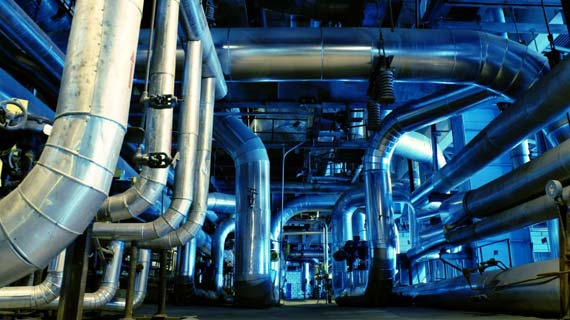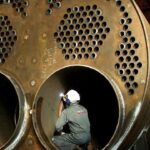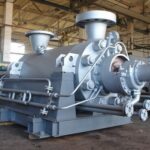Working Principles of Supercritical Steam Generator — Supercritical boilers have been popular since the mid-20th century. Since then until now, this boiler is very popularly applied to power plants, replacing subcritical boilers. Supercritical boilers have several advantages not possessed by subcritical boilers:
1. The efficiency of the supercritical boiler is higher because to generate the same heat energy, it takes less fuel than the subcritical boiler.
2. The exhaust emissions, especially carbon dioxide, are relatively lower than those of subcritical boilers.
3. The size of the boiler is relatively smaller than the subcritical boiler with the same

One basic concept of supercritical boilers is the working pressure and temperature above the critical point of water. If you already understand what is a critical point, then you should be know that above the critical point, water has a very different character than the other phase. Known as supercritical water, this phase has an indistinguishable characteristic of whether liquid water, or gas water. Supercritical water no longer has a boiling point, no longer having a saturation vapor phase, so that the pressurized water above 221 MPa if kept heated to above 374°C will immediately turn the phase into a supercritical steam, without passing the mixed phase between water and steam as in the boiler subcritical. This concept makes supercritical boiler components slightly different from subcritical boilers. Also because of this phenomenon, the term of boiler is not appropriate to use, since the water never actually boiled at supercritical boiler. We use supercritical steam generators term instead of supercritical boilers.
From that concept, there is already a fundamental difference between subcritical boilers and supercritical steam generators. In a subcritical boiler same before the water completely changes phase to superheated steam, water passes through the saturation phase. Therefore, the subcritical boiler required a steam drum component as a separator between liquid water with saturation temperature that can be heated further into superheated steam. While the formation of water vapour in the supercritical steam generators does not pass through the saturated steam phase, it can be ascertained that supercritical steam generators do not require steam drum. It is also one of the economic advantages of supercritical steam generators.

However, supercritical steam generators do not completely negate the separation system of liquid water with steam. In the initial condition of boiler ignition, the boiler is still working at the pressure below the critical point. In this condition, water heating will surely pass the phase of saturation, so the steam separator component is needed. To ensure the continuous flow of water inside the boiler evaporator as long as the working pressure is below the critical point, a boiler circulation pump is occupied. Gradually, the working pressure will be increased (sliding pressure) until it reaches the ideal pressure above the critical point. If the working pressure of the water is above the critical point (generally designed boiler load is more than 30%), the separator will automatically direct the fluid to the critical point is superheater, and no longer recirculated to the evaporator via boiler circulating pump. Boiler circulating pump stop working at this state. Under these conditions, the supercritical steam generators fully enter a once-through boiler flow process. Thus, the amount of water flow into the boiler via economizer is fully controlled by the boiler feed water pump.

Principle of Supercritical Steam Generators
If we look again, supercritical steam generators will experience two kinds of circulatory systems:

Wet mode: Wet mode occurs when the boiler load is still below 30%, or in other words the water pressure is still below the critical point. In this condition, because water will still experience saturation phase, there will be circulation process inside the boiler so it is similar to that happened in the subcritical boiler where the amount of water circulation passing boiler evaporator will be more than the amount of superheated water vapour produced. If referring to the example of the above boiler illustration, then the water flow will be like the scheme below.

Dry Mode: Dry mode occurs when the boiler load is above 30%, and the fluid pressure is above the critical point. In this condition, the boiler will no longer pass through the saturation phase, so the separator and boiler circulation pump will stop working. Supercritical boilers will experience a single fluid flow (once-through) in the sense that all water entering the boiler will only pass once through the boiler pipes in the absence of recirculating porosity through the evaporator again. Supercritical boiler flow scheme will be as below.



